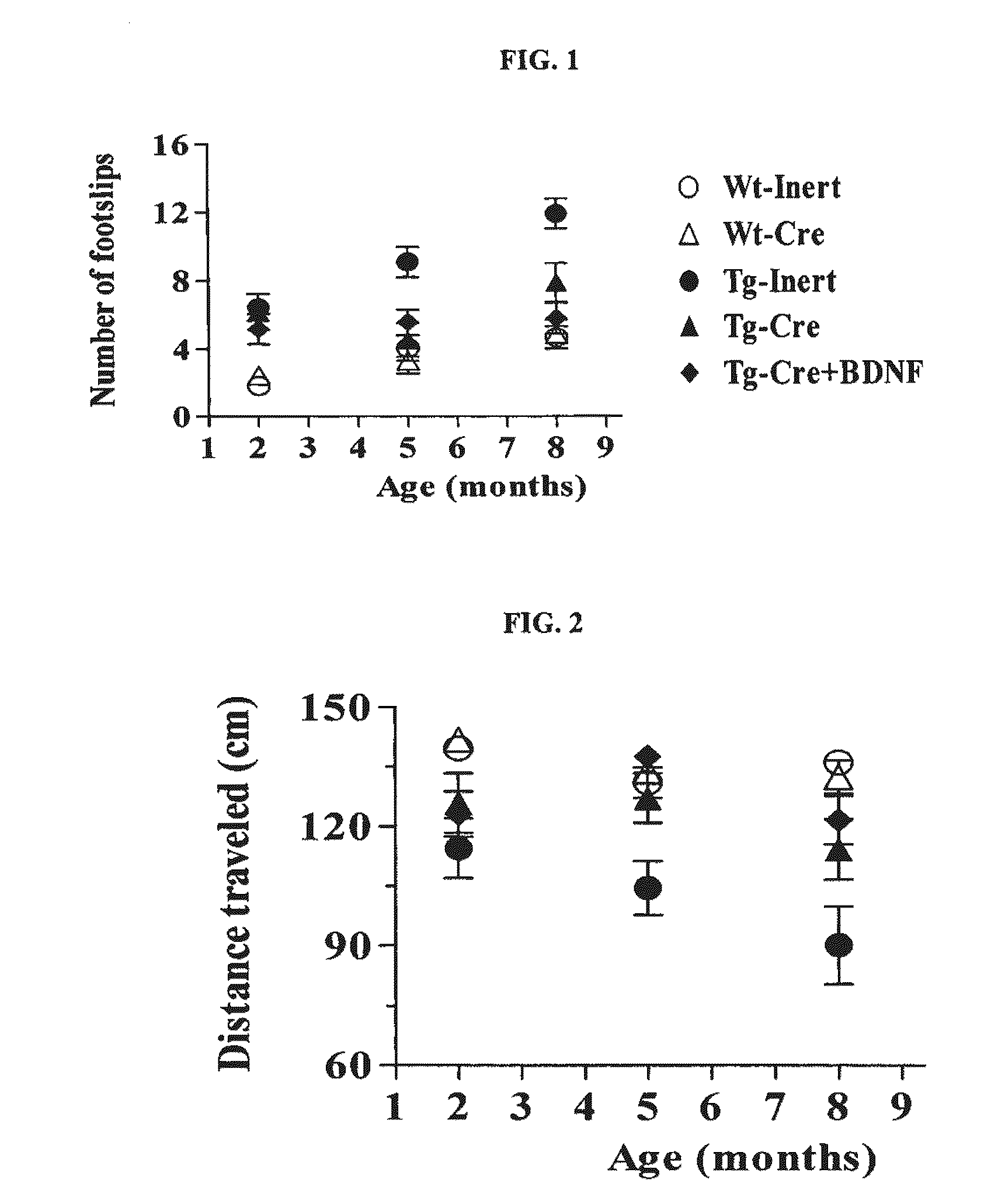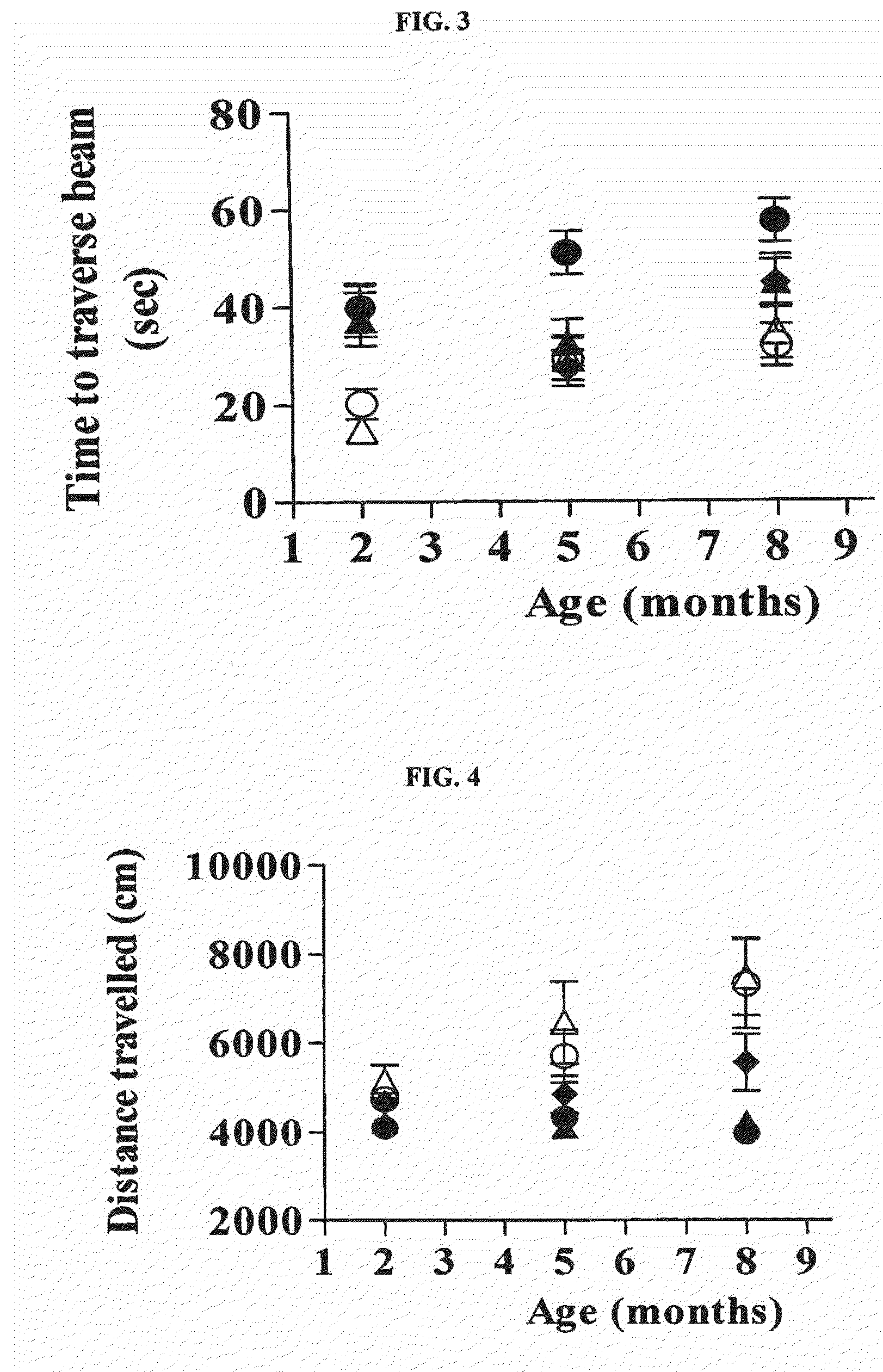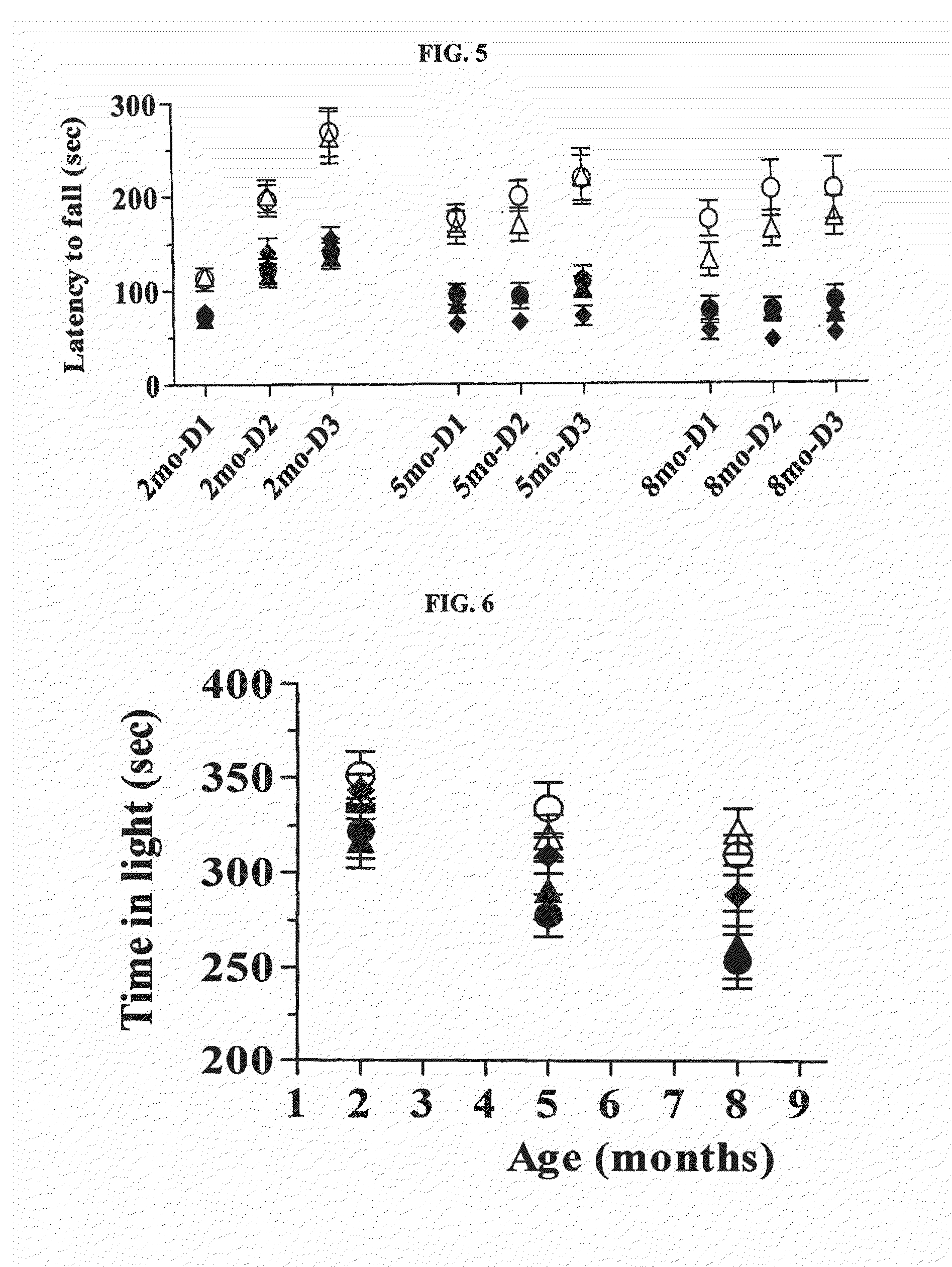Compositions and Methods for Making Therapies Delivered by Viral Vectors Reversible for Safety and Allele-Specificity
a technology of viral vectors and compositions, applied in the direction of viruses/bacteriophages, drug compositions, peptides/protein ingredients, etc., can solve the problems of irreversible therapy, inability to repair the underlying genetic flaw, and inability to discontinue therapy, so as to improve the cellular uptake of sequence modifiers
- Summary
- Abstract
- Description
- Claims
- Application Information
AI Technical Summary
Benefits of technology
Problems solved by technology
Method used
Image
Examples
example 1
Transgenic Mice Model
[0112]The inventors used the BAG transgenic mouse model of HD (BAC-HD) that expresses the full-length human mutant htt, with loxP sites (SEQ ID NO 125: 5′-ctacttcgta tagcatacat tatacgaagt tat-3′, SEQ. ID NO 126: 5′-ataacttcgt atagcataca ttatacgaag ttat-3′) flanking the exon 1 of mutant htt sequence encoding 97 CAC. This BAC transgenic mouse model exhibits progressive behavioral and neuropathological impairments (Gray et al., 2008, J. Neurosci., 28:6182-95).
example 2
Treatments
[0113]Two-month-old wildtype (Wt) and transgenic (Tg) BAC-HD mice were stereotaxically injected in groups of 18 (9 males, 9 females) with 5 μl of pre-validated AAV2 / 1 constructs (expressing Cre) (109 virus expressing generics) into the striatum of both hemispheres at a rate of 0.5 μl / min.
[0114]CRE delivered in the striatum of BAC-HD mice as a prelude to deciphering the potential therapeutic benefit of RNAi-mediated knockdown of mutant htt in HD. The coordinates for injection were +0.5 mm (anterior-posterior); +1.8 mm (medial-lateral), and −3.6 mm (dorsal-ventral), relative to Bregma.
[0115]In addition, the inventors investigated the therapeutic potential of supplementing brain-derived neurotrophic factor (BDNF) protein the striatal reduction of which is also implicated in the pathogenesis of HD. BDNF was administered intrastriatally as a nucleic acid sequence within AAV in the amount of 109 genomes.
[0116]Thus, the treatment groups were as follows: Inert (AAV expressing a co...
example 3
Treatment with Cre Alone and with a Combination of CRE and BDNF Reverses Motor Deficit in Tg BAC-HD Mice
[0119]Mice were first trained to traverse a circular beam (2-5 cm diameter, 40 cm length) from one end that was lit by a 60 W bulb to another end that terminated into a dark box.
[0120]Immediately after completion of training (5 successful trials on the training beam), mice were tested on four beams that presented an increasing challenge to traverse (1.2 cm through 0.3 cm diameter). The number of footslips, total distance traveled, and total time taken to traverse all beams were scored blind; data are represented as mean±SEM values for each group. A fall was scored with cut-off values of 4 for the number of footslips and 20 sec for the time to traverse per beam.
[0121]As demonstrated in FIG. 1, control Tg BAC-HD mice exhibited a higher number of footslips compared to wt animals at all three time points (2 months, 5 months, and 8 months). Treatments with Cre or Cre+BDNF significantly...
PUM
| Property | Measurement | Unit |
|---|---|---|
| Acidity | aaaaa | aaaaa |
Abstract
Description
Claims
Application Information
 Login to View More
Login to View More - R&D
- Intellectual Property
- Life Sciences
- Materials
- Tech Scout
- Unparalleled Data Quality
- Higher Quality Content
- 60% Fewer Hallucinations
Browse by: Latest US Patents, China's latest patents, Technical Efficacy Thesaurus, Application Domain, Technology Topic, Popular Technical Reports.
© 2025 PatSnap. All rights reserved.Legal|Privacy policy|Modern Slavery Act Transparency Statement|Sitemap|About US| Contact US: help@patsnap.com



